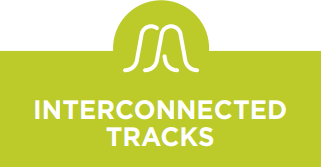
CAS Approaches to Fall Course Delivery
For fall semester 2020, while some courses will be offered fully online, the majority of courses will be on campus.
The on-campus courses must:
- Follow campus safety guidelines
- social distancing and reduced capacity in classrooms
- facial coverings in classrooms
- Enable students to join in-person or remotely as needed
- Provide meaningful on-campus experiences
- Articulate and emphasize engagement with course content, peers, and instructors to maximize student learning, instead of attendance requirements
Flexible Course Models
This table is designed to offer instructors ways to make adjustments to their course design to meet the demands of this term and to be prepared to adjust quickly to fully remote teaching, if necessary. All models include a mix of synchronous and asynchronous components. The models are not prescriptive, rather they are intended to offer four general approaches.
 |
 |
 |
 |
|
| Summary | Content, interactions, and activities primarily in-person, while accommodating online students |
Parallel tracks for students who are online or in-person, between which students can move
|
Builds in regular interaction between online and in-person students
|
Content, interactions, and activities optimized for online, with in-person enrichment
|
|
Synchronous
|
Generate content live and in-person, potentially streaming
|
In-person classes (same material as pre-recorded videos)
|
Online students join with in-person discussions via Zoom
|
Enrichment, Q&A, or recitation sessions
|
|
Asynchronous
|
Record class sessions for later viewing
|
Pre-record videos customized for online viewing; alternate online discussions
|
Pre-record videos customized for online viewing; can use additional online discussions for all students
|
Pre-record videos customized for online viewing
|
|
Good fit for
|
Courses that prioritize lecture or teacher-guided real-time engagement with course materials as dominant modes of content delivery
|
Courses that routinely ask students to engage with content during class time but don't necessarily need the whole class to engage with each other and the teacher in real-time
|
Courses that are discussion-based, and/or with small enrollment
|
Courses with large enrollment and taught by instructors with online experience, or existing hybrid courses
|
|
Technology in addition to Canvas
|
Zoom for livestream and office hours; VidGrid for recording; Canvas Calendar feature for scheduling to meet in-person limits
|
VidGrid for pre-recorded videos; Zoom for office hours; Yellowdig or Canvas Discussions
|
Zoom with Breakouts; omnidirectional microphones (e.g. Jabra Speak 510); VidGrid; Yellowdig or Canvas Discussions
|
VidGrid for recorded videos; Zoom for office hours; Canvas Calendar feature for scheduling to meet in-person limits
|
|
Brief example
|
CHEM 109A:
Large lecture with recitations and labs (CHEM 109L). Students are assigned a lecture day to attend in person. Lectures streamed live and recorded. Recitations are offered in-person and remote. Labs have custom plexiglass shields between stations & high air-flow in labs. Lab grade is best 5 out of 6 to accommodate absences. Case-by-case for additional issues with make-up labs ready.
|
PSYC 462/862:
In-class lessons were recorded separately and specifically for online students (2 per week). In-class students collaboratively work on solving a case study based on the application of a research article. They finish online using Canvas Discussion. Online students complete these exclusively online in their discussion group. Assessments are due at the end of each week.
|
ENGL 180:
Small-enrollment class. Students watch pre-recorded lectures before in-class meeting. Rotating subsets of students meeting for in-person discussions. Students who are unable to attend in person for a given week synchronously Zoom in to the in-class discussion.
|
LIFE 121:
As a large-enrollment class, content will be delivered by asynchronous videos and feedback via regular quizzes in Canvas Modules, with required sequential order. In-person sessions will be limited in capacity for campus safety guidelines. In-person sessions will be repeated for each subset of students, with a focus on case studies and help sessions.
|
These models were designed by CAS Teaching Academy Fellows from the framework offered by the Center for Transformative Teaching.